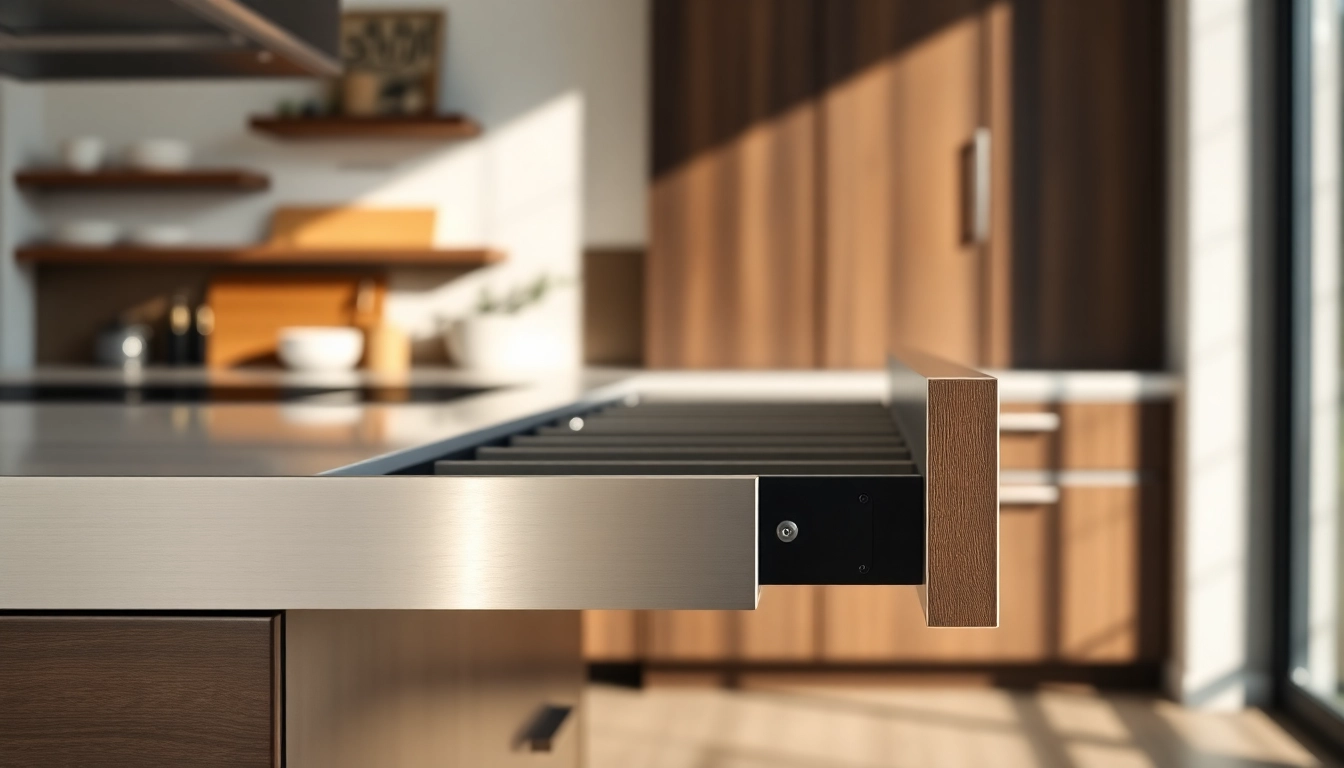Understanding Metal Drawer Systems
What Is a Metal Drawer System?
A metal drawer system is a type of storage solution that utilizes metal components to create robust, durable, and efficiently functioning drawers. Unlike traditional wooden drawer setups, metal drawer systems are designed to withstand heavy use, making them ideal for not only household furniture but also commercial and industrial applications. The core advantage of these systems lies in their strength, longevity, and ease of maintenance. Metal Drawer System offers a variety of designs tailored for different needs, from soft-close features to heavy-duty capabilities, ensuring that users can find the right fit for their needs.
Components of Metal Drawer Systems
The key components that make up a metal drawer system include:
- Drawer Boxes: Often made from high-quality steel, these boxes provide structure and support.
- Slides and Runners: These components facilitate smooth opening and closing of drawers. Ball-bearing slides are popular for their quiet operation and durability.
- Front Panels: Typically constructed from metal or a combination of metal and wood, the front panel provides aesthetic appeal while contributing to the drawer’s overall strength.
- Mounting Hardware: Essential for securing drawers within cabinetry, the right mounting mechanisms ensure stability and ease of use.
Benefits of Using Metal Drawer Systems
Metal drawer systems provide an array of advantages compared to traditional materials:
- Durability: Metal withstands wear and tear better than wood, making it a superior choice for long-term usage.
- Load Capacity: Many metal drawer systems can handle heavier loads thanks to robust designs and quality materials.
- Low Maintenance: Metal is often easy to clean and resistant to damage from moisture and pests, reducing upkeep efforts.
- Versatility: Metal drawer systems can be configured for various applications, from home kitchens to industrial workshops.
Choosing the Right Metal Drawer System for Your Needs
Factors to Consider Before Purchase
Before selecting a metal drawer system, it’s essential to consider several key factors:
- Drawer Dimensions: Measure the space where the drawer will be installed to ensure a proper fit.
- Weight Capacity: Understand the type of items you plan to store and choose a system that accommodates weight appropriately.
- Slide Type: Choose between ball-bearing slides for smoother actions or heavy-duty slides for capacity and sturdiness.
- Aesthetic Preferences: Consider the overall design of your space and select finishes and styles that complement your existing decor.
Comparative Features of Leading Brands
When evaluating metal drawer systems, consider the offerings of prominent brands within the space. For instance:
- Blum: Known for their soft-close options that completely prevent slamming, enhancing user experience.
- Grass: Products like ZBox combine the benefits of metal drawer boxes with effective ball-bearing slides.
- Häfele: Offers a diverse range of drawer systems tailored to both residential and commercial needs.
Tailoring Solutions for Specific Applications
Understanding the specific requirements of your application can help in narrowing down the most appropriate system:
- Kitchen Use: For kitchen drawers, focus on soft-close systems that promote a quieter, safer environment.
- Tools and Equipment: Choose heavy-duty options designed to hold significant weight and endure tough conditions.
- Office Furniture: For office settings, aesthetic features are essential; consider painted or coated finishes that mesh with overall decor.
Installation Tips and Best Practices
Preparing for Installation
Proper preparation is vital for a successful installation. Begin by gathering all necessary tools, including a drill, level, screwdriver, and measuring tape. Ensure you have read all manufacturer instructions thoroughly.
Step-by-Step Installation Guide
Follow these steps to install your metal drawer system effectively:
- Measure and Mark: Precisely measure the height and width of your cabinet space and mark the positioning for the sliders.
- Attach the Slides: Attach the slides to the sides of the drawer box, ensuring they line up correctly to prevent uneven sliding.
- Install in Cabinet: Secure the assembled drawer system within the cabinet, ensuring everything is level and straight.
- Test Functionality: Open and close the drawers several times to confirm smooth operation; make any necessary adjustments.
Common Pitfalls and How to Avoid Them
To enhance the installation experience, be aware of common mistakes:
- Not measuring accurately can lead to improper fitting, so ensure all dimensions are checked.
- Failure to level the drawer during installation may cause it to wobble or fail to open smoothly.
- Over-tightening screws can damage the material; use appropriate pressure when securing components.
Maintaining Your Metal Drawer System
Regular Maintenance Tips
To enhance the lifespan of your metal drawer system, adhere to these maintenance tips:
- Clean Regularly: Wipe down the surfaces with a damp cloth. Avoid harsh cleaners that could damage the finish.
- Inspect Components: Periodically check slides and hinges for wear and tear, ensuring everything remains functional.
- Lubrication: Apply a lubricant to the slides to ensure smooth operation, particularly in areas experiencing high frequency of use.
Fixing Common Issues
If issues arise with your metal drawer system, here are some potential fixes:
- Drawer Sticking: Check alignment and adjust slides as needed; ensure that there is no obstruction in the path of movement.
- Noisy Operation: This often results from inadequate lubrication or the need for cleaning; address both as suggested above.
- Drawer Misalignment: If drawers are uneven, adjust mounting screws at the base of the slides to realign components.
When to Replace Components
Knowing when to replace components of your metal drawer system is crucial for maintaining functionality. Consider replacement in the following scenarios:
- Visible wear, such as bends or breaks in slides and boxes, indicates a need for replacement.
- Persistent operational problems, such as repeated jamming or excessive noise, can signal that parts are past their useful life.
- Outdated features, especially with advancements in technology, may prompt you to reconsider upgrading for improved functionality.
Innovative Trends in Metal Drawer Systems
Smart Technology Integration
Smart technology is increasingly finding its way into the metal drawer system market. Innovations such as motion-sensing mechanisms and automated opening systems provide unprecedented convenience for users. These advancements cater especially to individuals with mobility concerns, enhancing accessibility in everyday tasks.
Eco-Friendly Materials and Designs
There is a growing demand for eco-friendly metal drawer systems. Manufacturers are utilizing recycled materials and sustainable processes to reduce environmental impact. Options such as powder-coated finishes instead of traditional paints contribute to less VOC emissions, offering a more sustainable choice for consumers who prioritize eco-friendliness.
Future Developments in Drawer Systems
The future of metal drawer systems promises exciting developments, including enhanced weight capacities and even more customizable designs. Expect to see improved soft-close mechanisms, advancements in tracking systems for better organization, and greater aesthetic flexibility, allowing homeowners to perfectly blend functionality with interior design.



